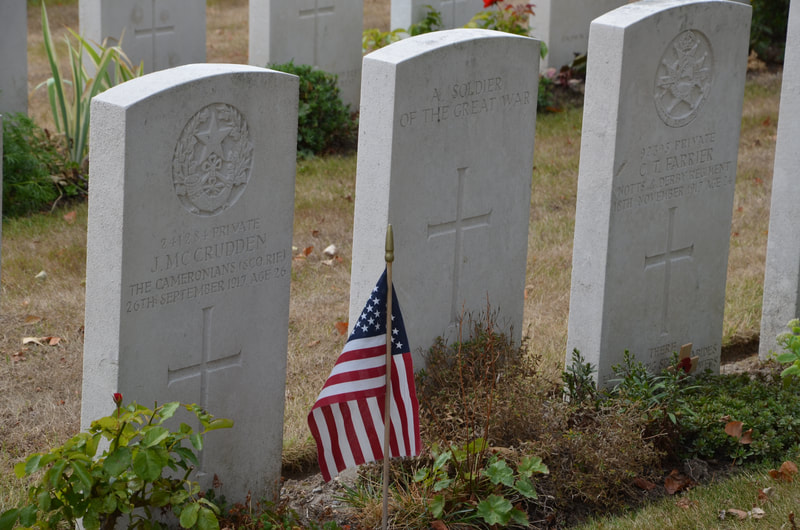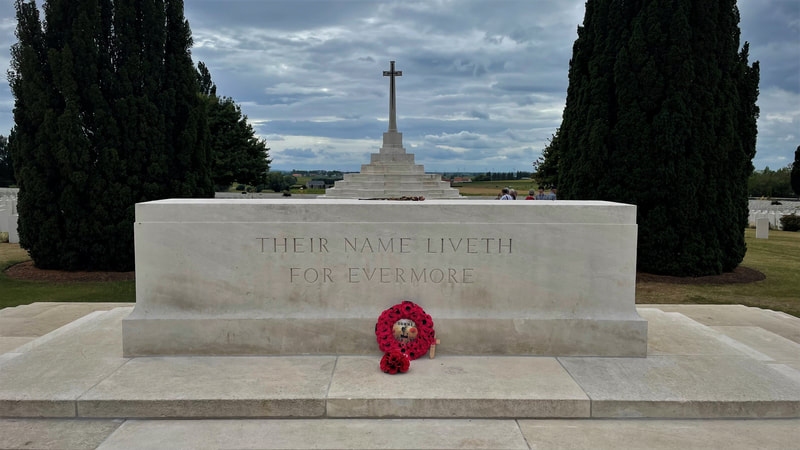Tyne Cot Cementery
Największy na świecie cmentarz wojenny Wspólnoty Narodów. Pochowano tu żołnierzy walczących od października 1914 do września 1918 roku. Cmentarz Tyne Cot znajduje się na obszarze znanym jako Ypres Sailent. Miały tu miejsce jedne z najkrwawszych epizodów I Wojny Światowej. Cmentarz, którego projekt stworzył Sir Herbert Baker, został otwarty w 1927 roku.
Pochowano tu trzech żołnierzy odznaczonych pośmiertnie krzyżem zwycięstwa. Są to: Kanadyjczyk, szeregowy James Peter Robertson oraz dwóch Australijczyków, sierżant Lewis McGee i kapitan Clarence Smith Jeffries.
Pochowano tu trzech żołnierzy odznaczonych pośmiertnie krzyżem zwycięstwa. Są to: Kanadyjczyk, szeregowy James Peter Robertson oraz dwóch Australijczyków, sierżant Lewis McGee i kapitan Clarence Smith Jeffries.
11961 żołnierzy Wspólnoty Narodów pochowano na cmentarzu Tyne Cot
8373 pochowanych nigdy nie zostało zidentyfikowanych
34948 nazwisk poległych żołnierzy wyryto na pamiątkowych tablicach
8373 pochowanych nigdy nie zostało zidentyfikowanych
34948 nazwisk poległych żołnierzy wyryto na pamiątkowych tablicach
Bohaterowie polegli w obronie wolności
Pierwotnie w miejscu, w którym obecnie znajduje się cmentarz Tyne Cot, były usytuowane niemieckie bunkry. Po wojnie, w latach 1919-1921, Brytyjczycy zebrali z okolicznych cmentarzy ciała żołnierzy sił sprzymierzonych i pochowali je na cmentarzu Tyne Cot. Monumentalny pomnik, zaprojektowany przez Sir Herberta Bakera, to półkolista ściana o wysokości 4,25 metra i długości ponad 150 metrów. Wyryto na niej nazwiska 34948 żołnierzy, których ciał nigdy nie odnaleziono. Tablice z nazwiskami poległych znajdują się również na ścianach trzech apsyd i dwóch rotund będących częścią pomnika. W środkowej apsydzie upamiętniono żołnierzy nowozelandzkich, poległych w bitwach pod Broodseinde i pod Passchendaele. W pozostałych miejscach umieszczono tablice z nazwiskami poległych Brytyjczyków.
|
Adres:
Vijfwegestraat 4 8980 Passendale |
Godziny otwarcia:
Codziennie: 10.00-18.00 |
Cena biletu:
Wstęp wolny |








